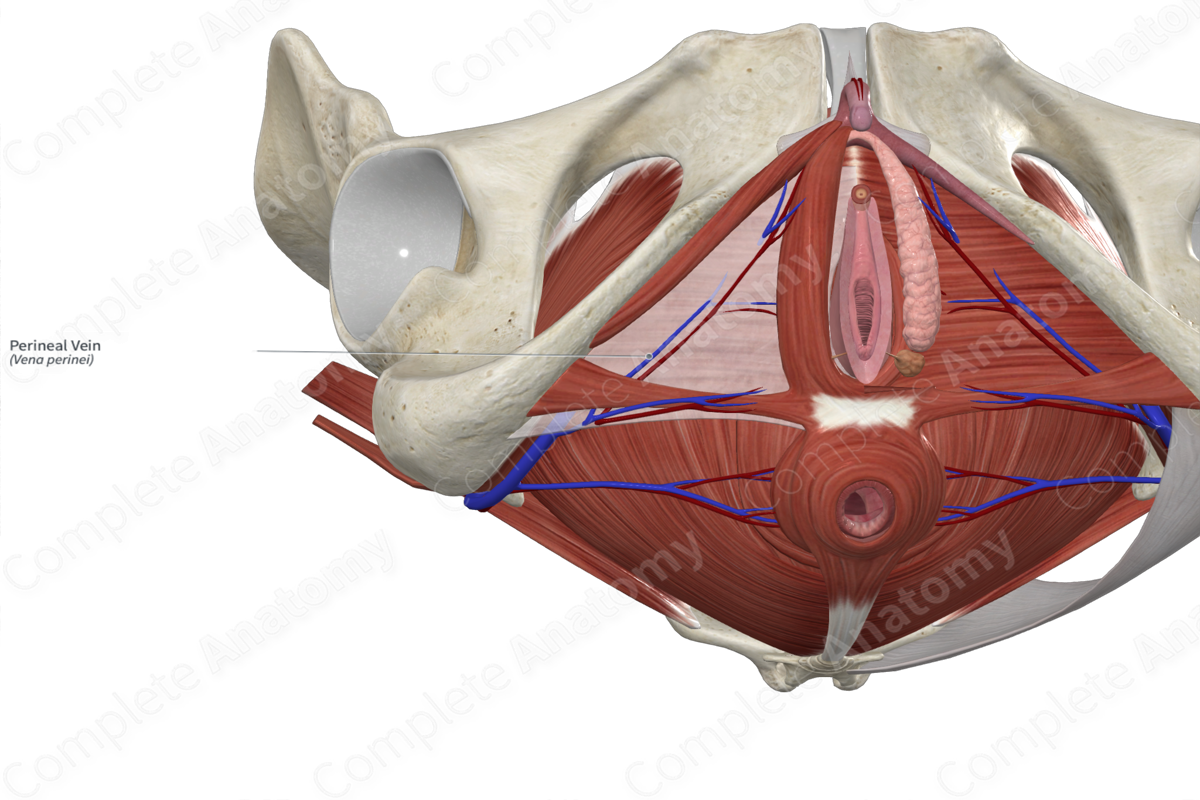
Quick Facts
Origin: Bulb of penis (males) or vestibule of vagina (females).
Course: Travels inferiorly through the pudendal canal to drain into internal pudendal vein.
Tributaries: Posterior scrotal vein and vein of the bulb of penis (males) or posterior labial vein and deep vein of the clitoris (females).
Drainage: Superficial perineal muscles and scrotum (males) or bulb of vestibule (females).
Origin
The perineal vein originates in the bulb of penis (males) or bulb of vestibules (females).
Course
From its origin, the perineal vein travels from the superficial space and runs backwards between bulbospongiosus and ischiocavernosus muscles. It pierces the perineal membrane and runs through the pudendal canal to drain into the internal pudendal vein.
Tributaries
In males, the perineal vein receives tributaries from the posterior scrotal vein and the vein of the bulb of penis.
In females, the perineal vein receives tributaries from the posterior labial vein and the deep vein of the clitoris (Netter, 2011).
Structures Drained
The perineal vein drains the skin of the perineum and external genitalia. During sexual arousal, the perineal vein is compressed by the bulbospongiosus muscles, pushing blood into the body of the penis (males) or clitoris (females) to aid in erection (Moore, Dalley and Agur, 2013).
References
Moore, K. L., Dalley, A. F. and Agur, A. M. R. (2013) Clinically Oriented Anatomy. Clinically Oriented Anatomy 7th edn.: Wolters Kluwer Health/Lippincott Williams & Wilkins.
Netter, F. H. (2011) Atlas of Human Anatomy. Netter Basic Science Series: Saunders/Elsevier.
Learn more about this topic from other Elsevier products
Vein

A venous sinus is a vein with a thin wall of endothelium that is devoid of smooth muscle to regulate its diameter.




